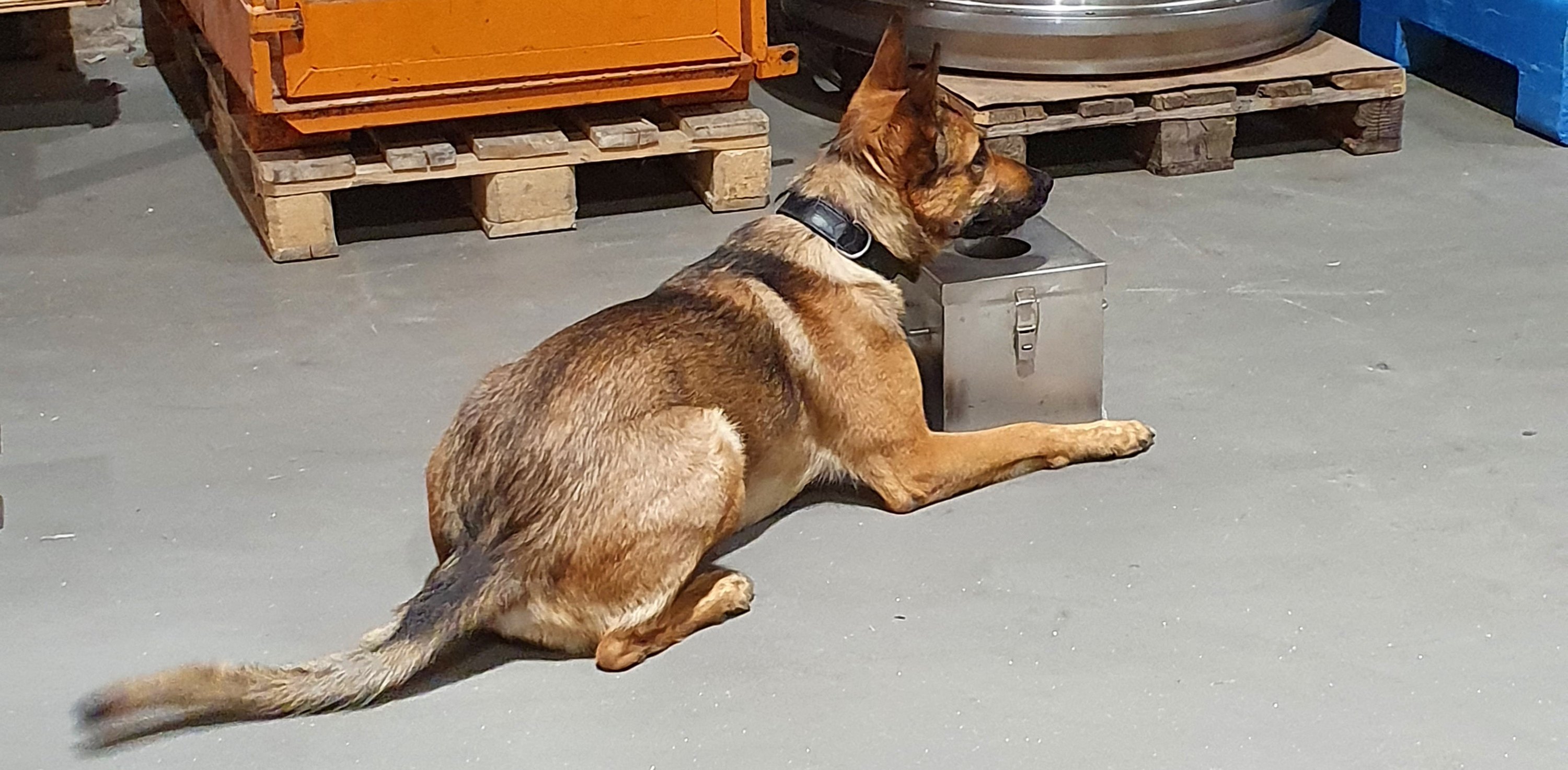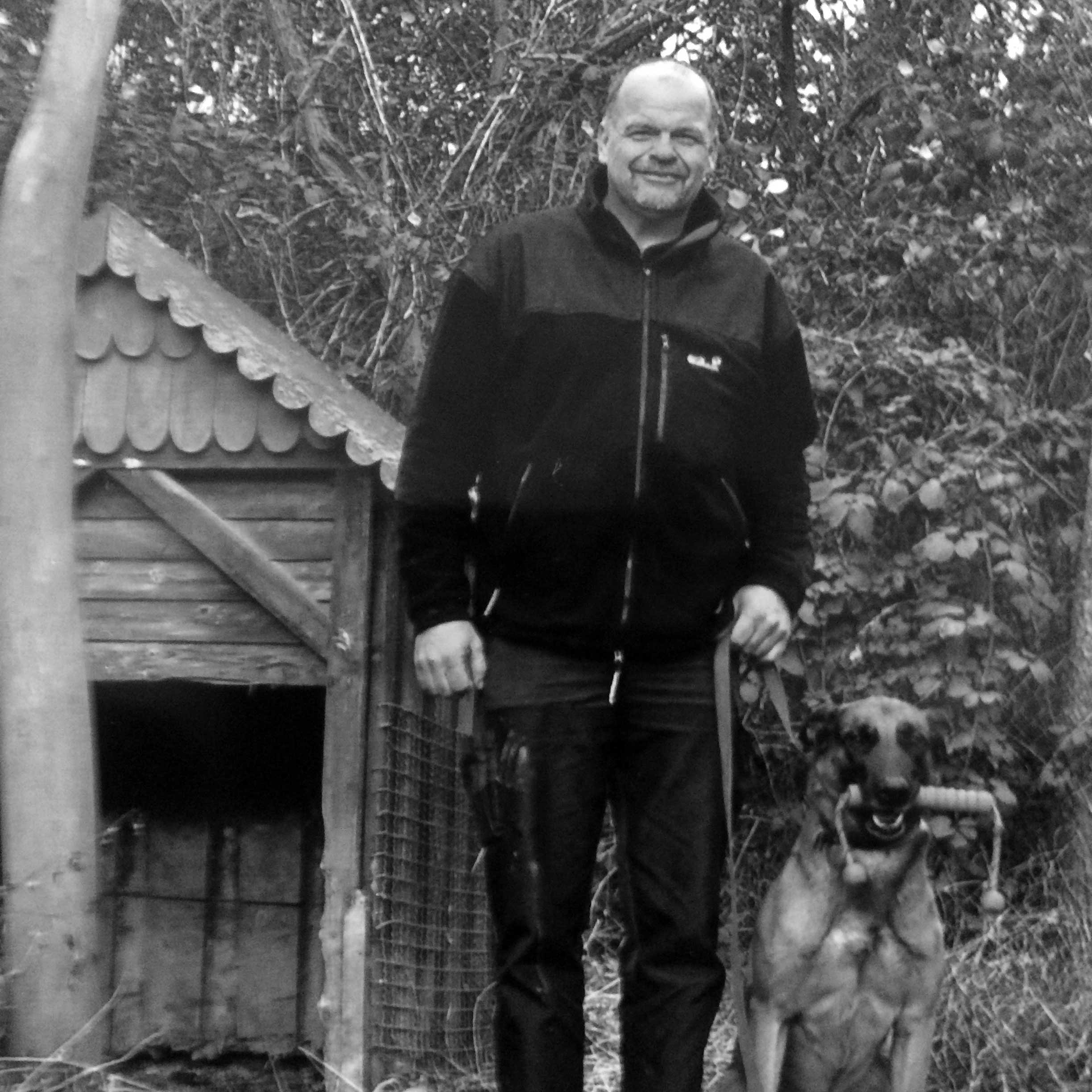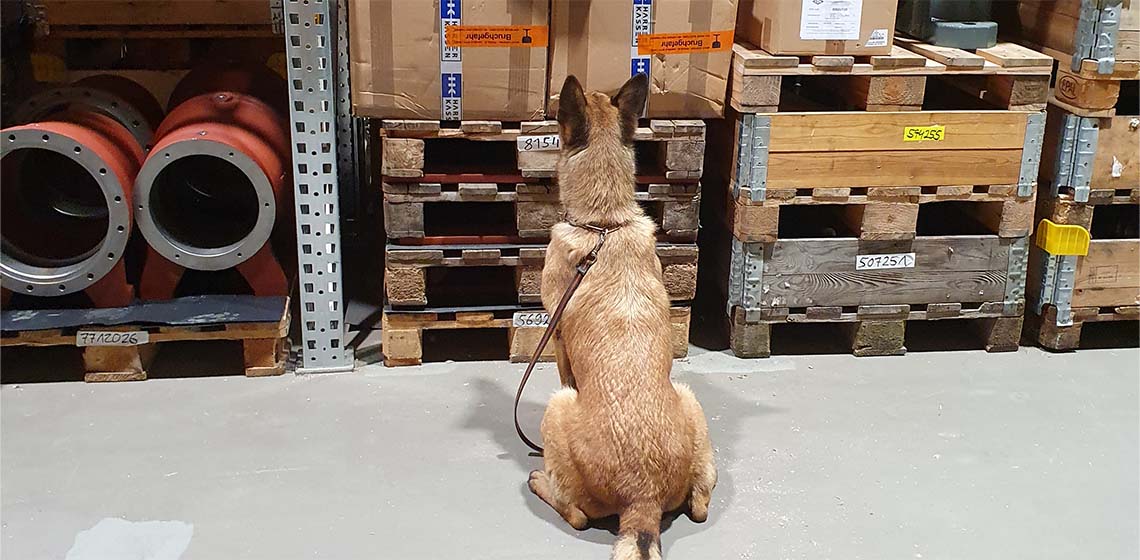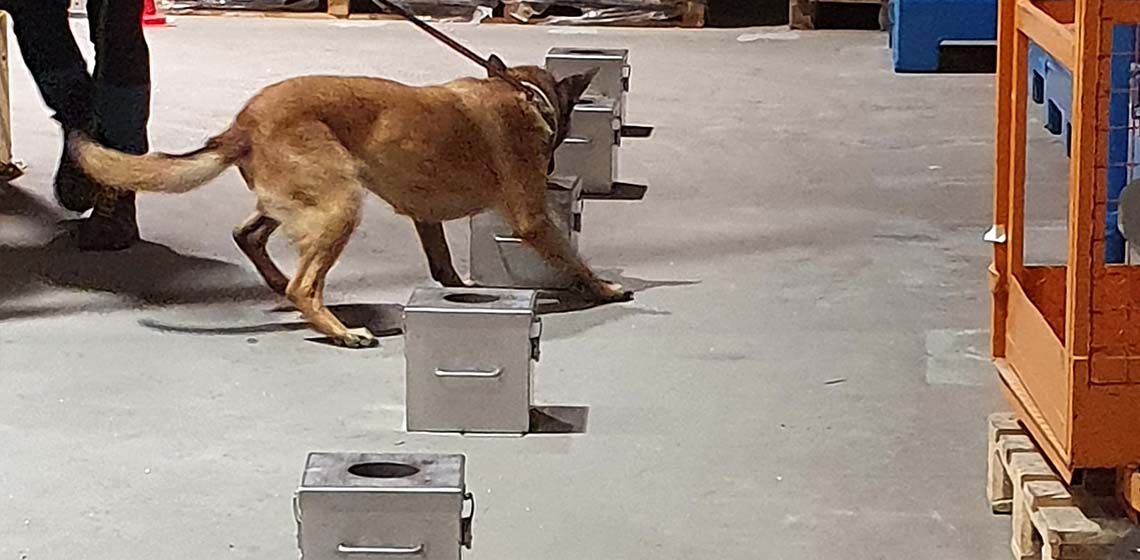At first glance, the Federal Aviation Office (LBA) and BMA appear not to have much in common, other than being based in Braunschweig. But there are a number of things they share. An example: security has a high priority for both of them. From time to time, the LBA – the higher federal authority for civil aviation – uses our logistics warehouse to put the skills of explosives detection dogs to the test. Jens Reinbeck, who assesses the animals, tells the interviewer what makes our warehouse an excellent location and how important the dogs’ work is. The 56-year old also explains how the animals find explosives.
Unusual business: air cargo security at BMA
In our logistics warehouse, explosives detection dogs put their skills to the test
Mr Reinbeck, you have just completed the final assessment of three explosives detection dogs in the BMA logistics warehouse. What important job do these dogs have?
Their job is to improve aviation security. Before air mail items or any other cargo are taken to the airport in Germany, they are checked by security firms in large buildings. These companies use x-ray machines and detection dogs to ensure no explosives are hidden in the cargo and that there is no risk for aviation. The Federal Aviation Office is responsible for a secure air cargo supply chain in Germany – and that includes the final assessment and certification of explosives detection dogs.
Why is BMA’s logistics warehouse such a good location for assessing the dogs?
The warehouse is perfect for our purposes because it is huge and has many storage shelving units. That gives us a wide range of options for placing and hiding odour samples, which the dogs then have to find.
How do you prepare the final assessment?
I’m normally the first one on site on the day of the assessment. I’ll check the complete warehouse, making sure there is nothing that could hurt the dogs. At the same time, I decide where to place the test containers with the odour samples. Then my colleagues will join me, and one of them will have a secure container with the explosive.
What qualities should an explosives detection dog have?
Dogs are trained to detect the scent of a range of explosives. So they need to have a high level of obedience and play-drive. When a dog detects the explosive and indicates its location, such as by sitting, freezing or lying down, its favourite toy immediately makes an appearance.
Its favourite toy?
Yes, that’s the motivation. The dog knows that, if it detects the odour of the explosive, its handler will be there immediately and play with it to reward it. It generally takes between four and five months to train an explosives detection dog. The search tasks become increasingly difficult, but the dog’s success is always rewarded. That’s how it is conditioned.
Do explosives detection dogs need a particularly strong sense of smell?
Every dog has that. A dog’s nose has countless tiny capillaries that together are equivalent to two or three football fields in size. But a general principle would be that the bigger a dog’s muzzle, the better its sense of smell. What’s important is that the dog has been trained well, so it can search over an extended period of time.
What breeds are suitable for training as an explosives detection dog?
Typical working dogs are German and Belgian Shepherds, but Dutch Shepherds and hunting dogs are also highly suitable. There are between 60 and 80 explosives detection dogs in Germany. When they’ve finished their work in the warehouse, they’ll go home with their handler. The handler and the animal are a team, and these working dogs are also family pets.
Who gets more agitated during an assessment, the dog or its handler?
In an exam situation, the handler may get agitated and this is often transferred to the dog via the leash. The animal will sense any feelings of uncertainty in its handler. But this agitation will disappear once the dog has successfully completed the first test area. There are 18 searches overall with different tasks.
How did the assessment go today?
Very well. All three dogs passed. Afterwards, the mood is, of course, quite different: the dog and handler are both pleased that the assessment was a success.




